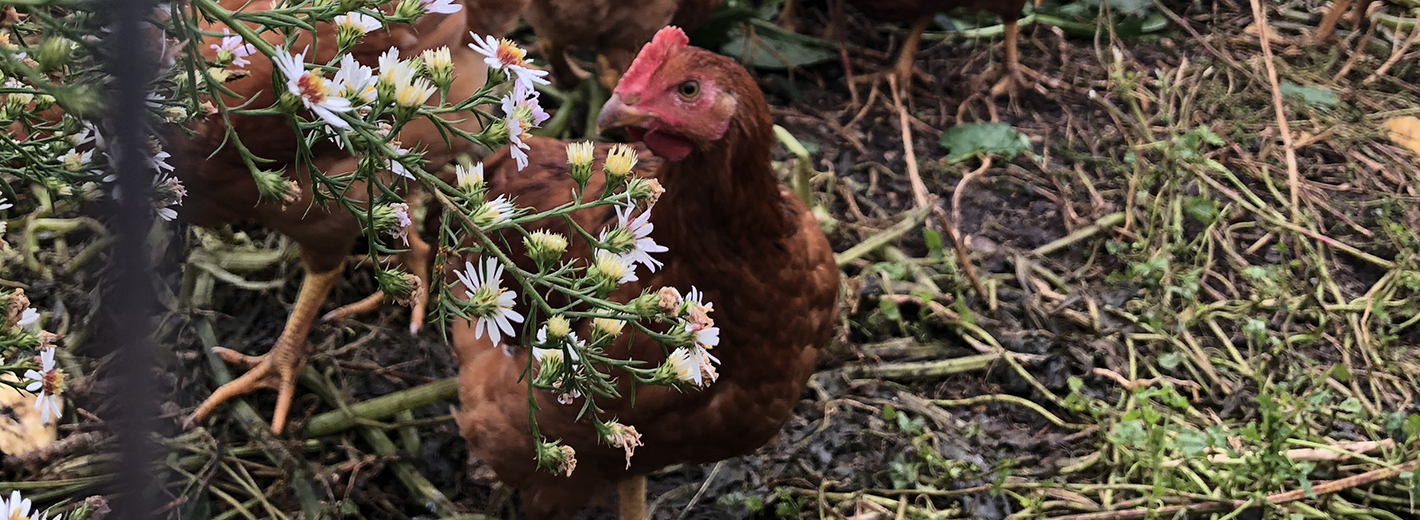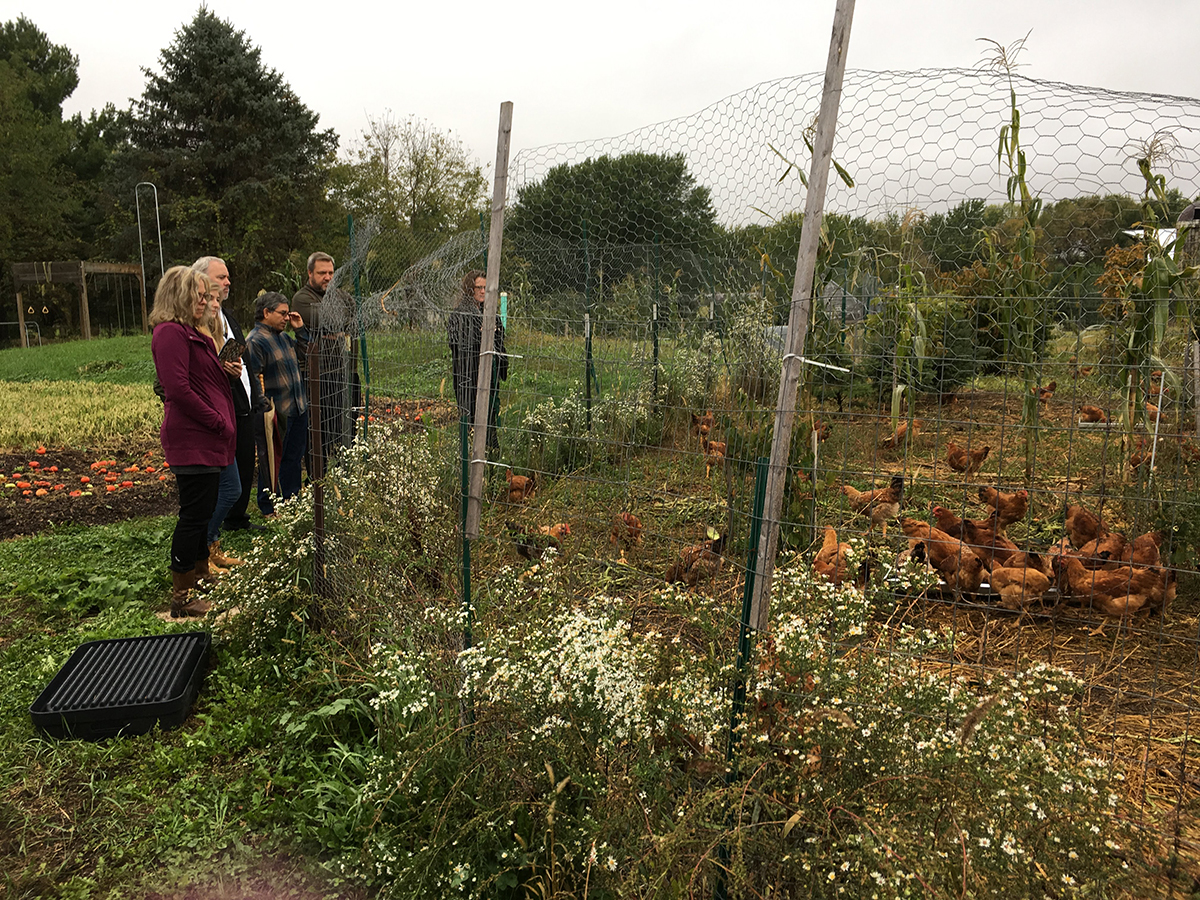
Checking in on the Main Street Project

Main Street Chief Operations Officer Julie Ristau; Fellow Shannon Tivona; Carleton Executive Chef Bryan Schouten; Main Street Chief Strategy Officer Regi Haslett-Marroquin; St. Olaf Executive Chef Rafael Perez; and General Manager Traci Quinnell all watch the chickens devour the comfrey
Two years ago, Main Street Project — a Farm to Fork vendor in Northfield, MN — was the recipient of Bon Appétit’s annual client gift. Main Street creates pathways out of poverty for rural Latino immigrants in low-wage jobs via a new model for the humane production of free-range poultry. The model integrates perennial crops (hazelnuts and elderberries) into production to create natural habitats for the birds and maximize system efficiency. The funds from the gift were used to build two production units (chicken coops) dedicated to helping graduates of the advanced training program.
Recently, St. Olaf College General Manager Traci Quinnell and Executive Chef Rafael Perez, Carleton College General Manager Katie McKenna and Executive Chef Bryan Schouten, and Fellow Shannon Tivona went to go see how things were going. Main Street Project Chief Strategy Officer Reginaldo (Regi) Haslett-Marroquin gave them a tour, with help from other members of the Main Street team.
That day, the chickens they saw were eating a ground cover plant known as comfrey. Regi said he likes to try lots of new things to find the best way to perfect the system, and this is his latest trial, which seems to be successful. Comfrey grows exceptionally fast, is very nutritionally dense, and the chickens love it. Regi has been able to cut out the inclusion of ground feed in their diets, lowering costs.
“Health is not the absence of disease, it is an organism’s ability to bounce back.” Since the birds are kept in healthy conditions…they are able to bounce back much more easily.
Regi talked about how important it is to think about regenerative agriculture in three dimensions. Not only does he think about the surface of his acre of land, but also 12 feet up and 12 feet deep. The understory provides nutrient-rich food for the chickens, who in turn enrich the soil with their waste, which offers perfect growing conditions for hazelnut trees. Due to these specialized growing conditions, with no additional inputs these hazelnut trees are about 10 times more productive than the average hazelnut tree. This helps to create additional income with little extra work or resources.
During the tour of the chickens’ quarters, the group learned that instead of pumping antibiotics into the water, as some operations do, Main Street relies on a combination of vinegar, garlic, onion, and herbs. As Regi said, “Health is not the absence of disease, it is an organism’s ability to bounce back.” Since the birds are kept in healthy conditions where they can engage in natural behaviors, aren’t stressed, have plenty of room, and routinely receive this immune boost, they are able to bounce back much more easily.
After the tour was over, Rafael was chatting with Jim Kleinschmit, who raises chickens using the Main Street Farms System, about the logistics of what happens to the chickens once they’re harvested. The chickens arrive at St. Olaf whole and frozen, which means a significant amount of space in the small St. Olaf kitchen must be dedicated just to thawing chicken. The time and skilled labor necessary to then break down the whole chickens into usable parts also make extra demands on the kitchen. Jim mentioned that Main Street is investing in a mobile processing unit, but they needed to make sure they’d have buyers for eight-pieced chickens. Rafael smiled and responded, “I will take as many chickens as you can give me!”
Such moments are always the highlights of a Farm to Fork visit. The group left feeling great that a small farmer was reassured that his business will have a reliable buyer, the chefs at St. Olaf knew that they’d continue to get a high-quality product but with fewer complications — and that the students will continue to enjoy local, sustainable, and humane meat.